The Andromeda Galaxy is the next bigger galaxy in our intergalactic neighborhood. It is part of the constellation Andromeda in the northern hemisphere. Its distance is estimated at around 2.5 million light-years. With its diameter of about 220,000 light-years, it is slightly bigger than our own galaxy, the Milky Way. It is estimated that it contains around 1 trillion stars with a total mass of 800 billion solar masses. This makes the Andromeda Galaxy the most massive galaxy in the Local Group. The Milky Way has the second place in this ranking. Due to the gravitational attraction between such massive objects, the Andromeda Galaxy and the Milky Way are attracting each other and will collide in a far future with each other.
Not even 100 years ago, in 1924, Edwin Hubble discovered by measuring redshifting, that the Andromeda Galaxy is not part of our own galaxy and it is an independent galaxy. Before that, it was thought that there is only one galaxy in the universe, our Milky Way. That should also explain the name Andromeda Nebulae.
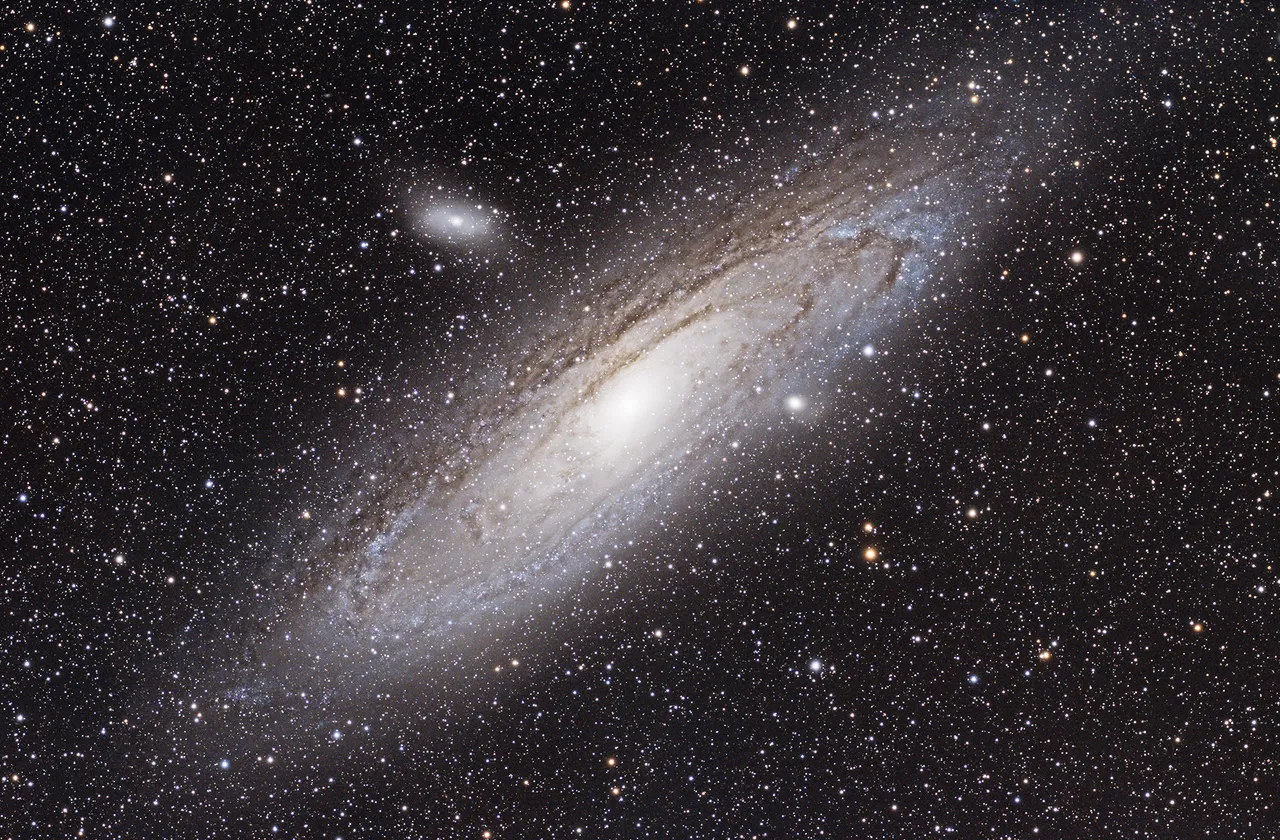
This photo was taken with a focal length of 420mm. As you can see, the Andromeda Galaxy is a huge object. Its apparent dimension seen from Earth is around 3 times the size of the full Moon. This makes it easy to observe it, even with just small binoculars.
The annotated image shows which objects I was able to capture and where there are located in the picture.
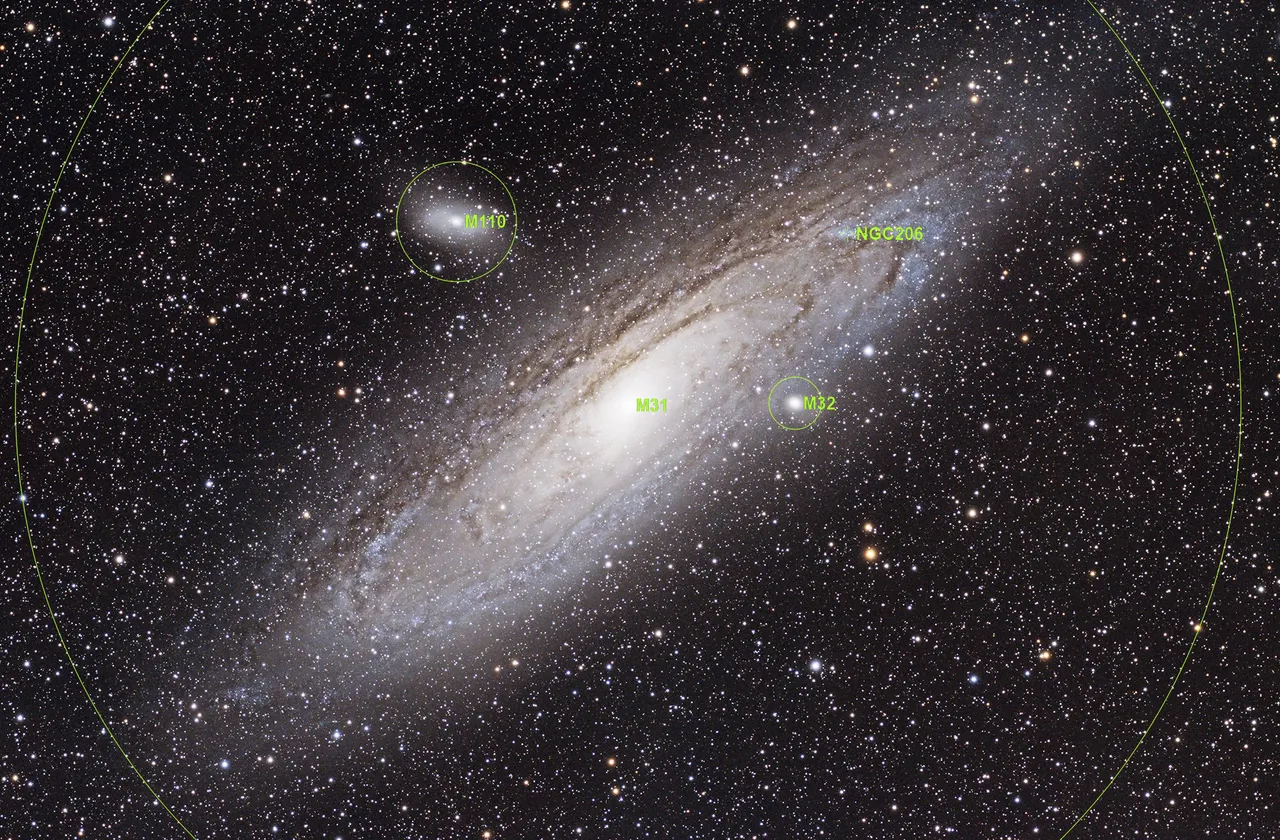
Andromeda's satellite galaxies
The Andromeda Galaxy has nearly 40 satellite galaxies. On the annotated image you can see two of them; Messier 32 and Messier 110. I will, therefore, limit myself to the two visible.
Messier 32 is an elliptical dwarf galaxy, which is about 2.3 million light-years away. At a diameter of about 8,000 light-years, its mass is about 3 billion solar masses. So its stellar density is nearly as high as the density in the central region of the Andromeda Galaxy.
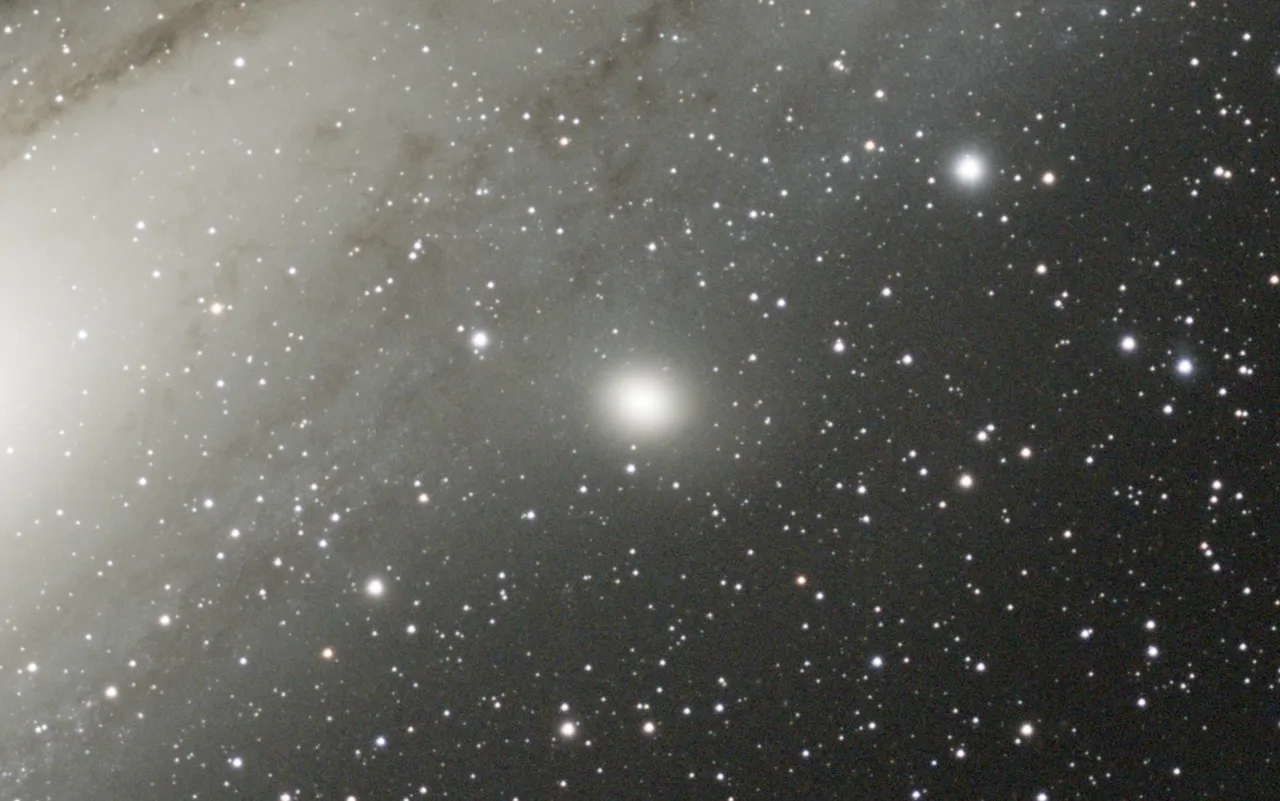
This is a cutout of Messier 32 out of my main image. It is stacked with 2x drizzle to increase the resolution and is only slightly edited.
Messier 110 is an elliptical galaxy, which is slightly closer to us than Messier 32. It is about 2.2 million light-years away. Its mass is estimated to be at up to 15 billion solar masses and its diameter at about 15,000 light-years.
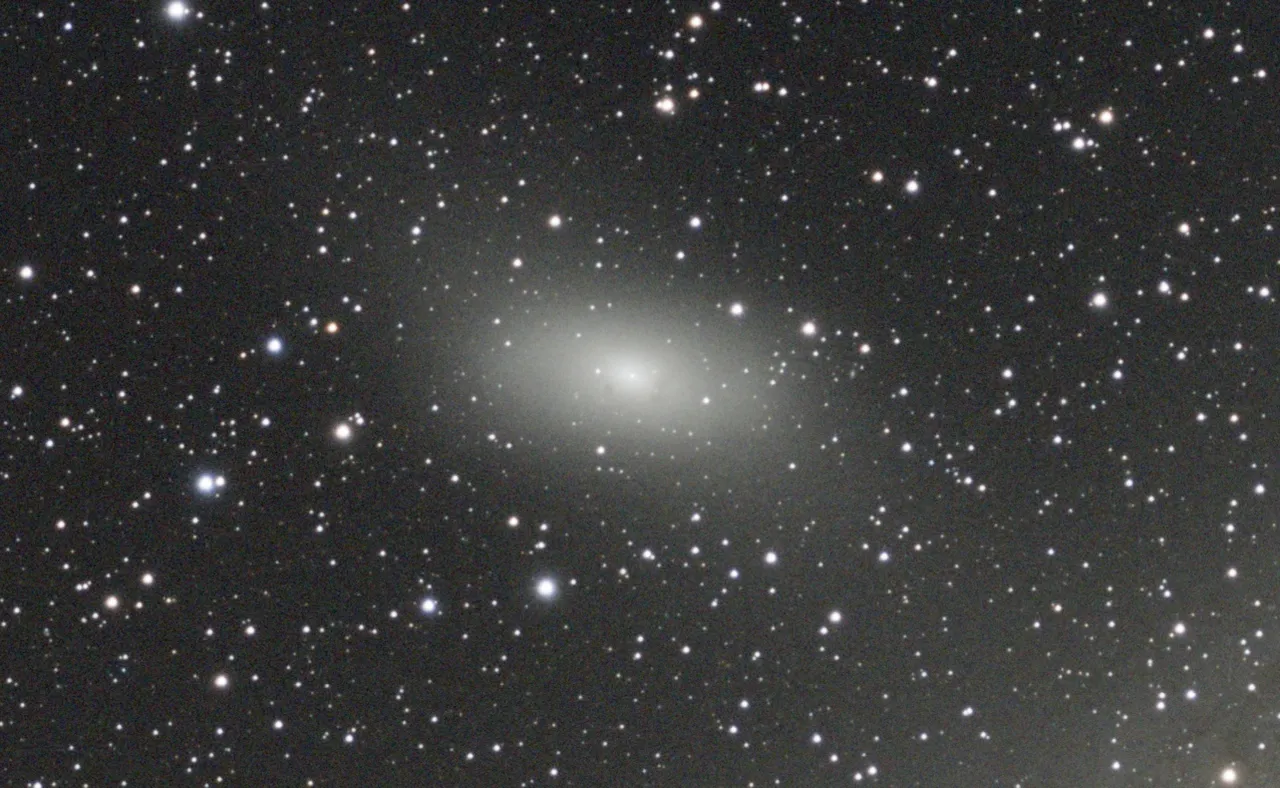
This is a cutout of Messier 110 out of my main image. It is stacked with 2x drizzle to increase the resolution and is only slightly edited.
Here are pictures of Messier 32 and Messier 110 taken from the Two Micron All Sky Survey (2MASS).
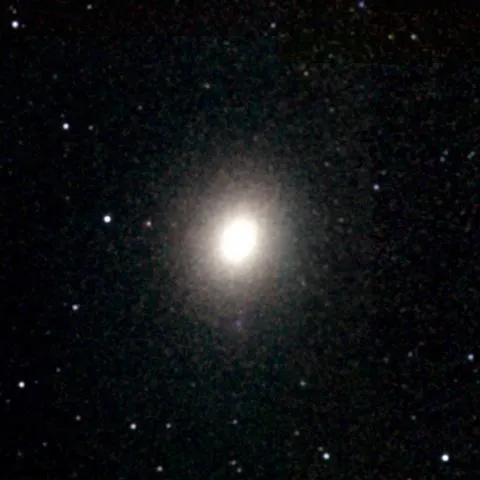 Copyright: Two Micron All Sky Survey (2MASS); public domain
Copyright: Two Micron All Sky Survey (2MASS); public domain
|
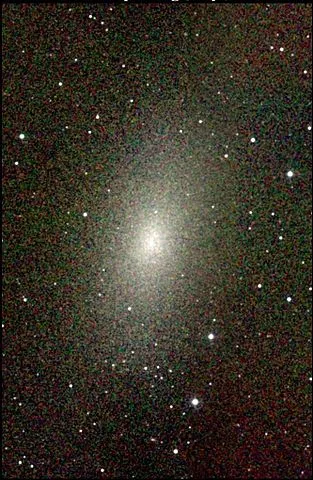 Copyright: Two Micron All Sky Survey (2MASS); public domain
Copyright: Two Micron All Sky Survey (2MASS); public domain
|
|---|
Andromeda's biggest star cloud
The Andromeda Galaxy contains another exciting object, which I was able to capture also. On the annotated image above you can see the star cloud NGC206 and its position. It is one of the brightest and biggest star formation regions in the whole Local Group. Its size is around 4,000 light years across, and it has a mass of estimated 200,000 solar masses. Its age is expected to be about 20 million years. There are more than 300 stars in it that are brighter than -3.6 absolute magnitudes. The youngest stars in it are less than 10 million years old so that it can be assumed that the star formation is in full swing.

This is a cutout of NGC206 out of my main image. It is stacked with 2x drizzle to increase the resolution and is only slightly edited.
This picture shows NGC206 in a better resolution.
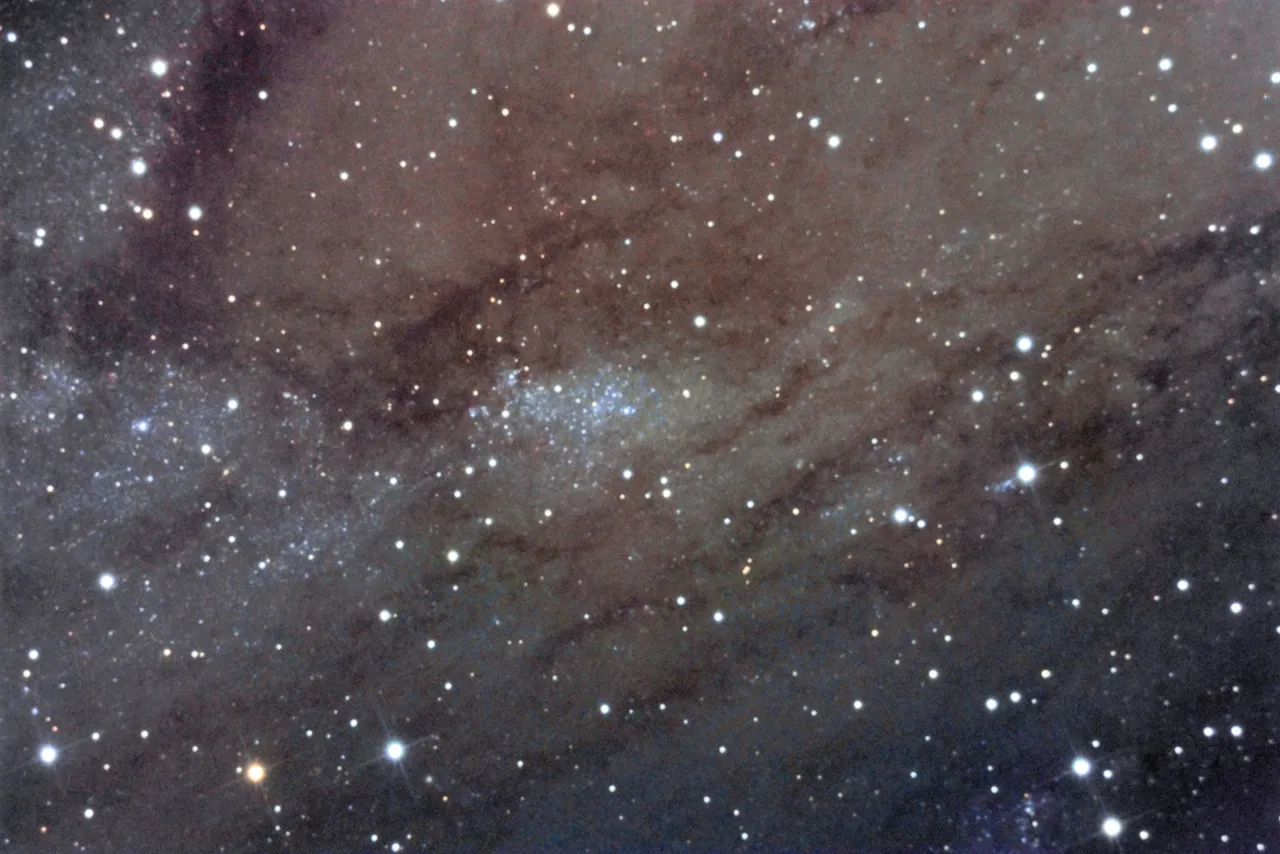
Copyright: Andrea Tamanti, Attribution-ShareAlike 2.5 Generic (CC BY-SA 2.5)
Our intergalactic neighborhood, the Local Group
The Local Group is a system of galaxies, of which the Milky Way belongs to. It contains more than 54 galaxies and has a size of 10 million light years in diameter. The local group is, so to say, the intergalactic neighborhood of the Milky Way.
This map of the Local Group shows our intergalactic neighborhood very well detailed.
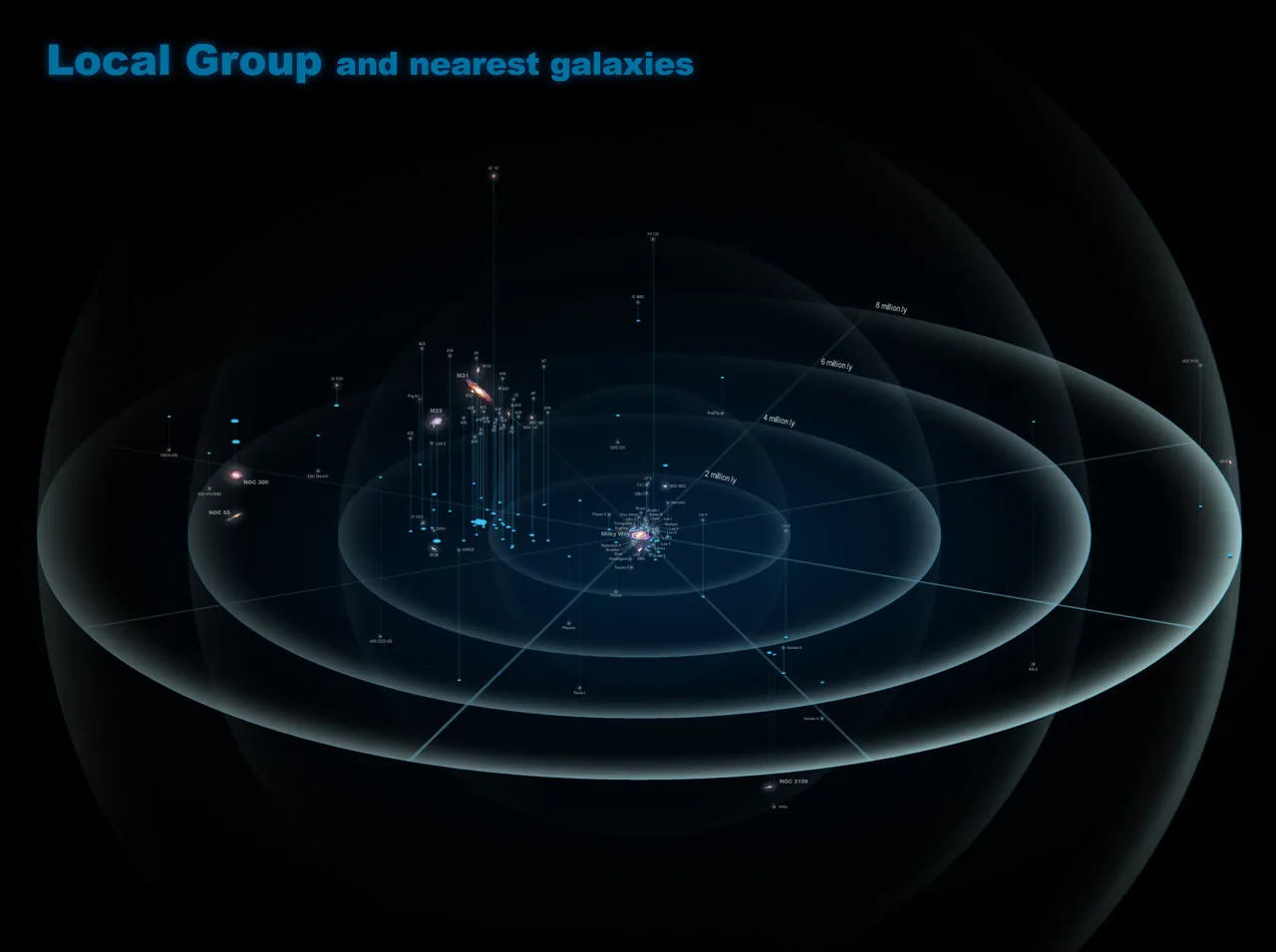
Copyright: Antonio Ciccolella, Attribution-ShareAlike 4.0 International (CC BY-SA 4.0)
Andromeda's collision with the Milky Way
In 2012, through observations with the Hubble Space Telescope, calculations could be made predicting a relatively sure collision of the Andromeda Galaxy and the Milky Way. Previously it was speculated, but it could not be said precisely.
Both galaxies move towards to each other at a speed of around 120 km/s (432,000 km/h). NASA estimates that the "event" of the fusion will start in about 3 to 4 billion years, and it will take about 3 billion years for the merger to form a super galaxy.
This computer-simulated visualization from NASA shows how the collision could go.
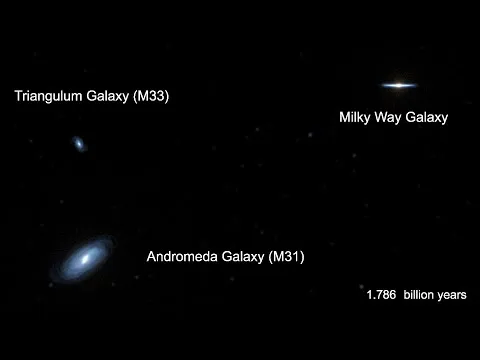
Copyright: Frank Summers (STScI), Gurtina Besla (Columbia University), and Roeland van der Marel (STScI); public domain
Direct collisions of stars unlikely to occur because the colliding galaxies largely confused fly through each other. This is due to the enormous distances between the stars. The galaxies are tied together by their gravitational force and merge into a single giant galaxy. Our solar system is expected to be catapulted to an entirely different place in the “new” galaxy, but not fundamentally destroyed. The changing gravitational forces, however, can tear planets out of their orbits and can thereby cause collisions among the planets or other celestial objects.
Details of the picture captured by me
The picture was taken from my backyard with the following settings and the following equipment.
Light frames: 22 x 300" and 4 x 600" @ unity gain
Dark frames: 6 x 300" and 6 x 600"
Flat frames: 10 pcs.
Bias frames: 256 pcs.
Camera: QHYCCD247C
Scope: TSAPO65Q · 420mm · f6.5
Guide camera: QHY5L-II
Guide scope: TSL60D · 240mm · f4.0
Mount: Skywatcher AZ EQ-6
All is controlled by my Astro-PC over Remote-Desktop and wireless LAN.
Software: Sequence Generator Pro, PixInsight, Photoshop CC
References:
https://de.wikipedia.org/wiki/Andromedagalaxie
https://de.wikipedia.org/wiki/Milchstra%C3%9Fe
https://www.wired.com/2009/12/1230hubble-first-galaxy-outside-milky-way/
https://de.wikipedia.org/wiki/Edwin_Hubble
https://de.wikipedia.org/wiki/Messier_32
https://de.wikipedia.org/wiki/Messier_110
https://en.wikipedia.org/wiki/NGC_206
http://annesastronomynews.com/photo-gallery-ii/galaxies-clusters/ngc-206/
https://de.wikipedia.org/wiki/Lokale_Gruppe
https://en.wikipedia.org/wiki/Local_Group
https://www.welt.de/wissenschaft/weltraum/article106402422/Milchstrasse-kollidiert-mit-der-Andromeda-Galaxie.html
https://svs.gsfc.nasa.gov/30955
https://de.wikipedia.org/wiki/Andromeda-Milchstra%C3%9Fen-Kollision
Thank you very much for visiting and reading!
I hope this has been a useful post for you. If you have any questions or suggestions, please don't be afraid to let me know of anything you thought about this post in the comments below!
Yours, @astrophoto.kevin
Copyright note for my pictures:
All images, otherwise clearly indicated, in this post are my own work.
You can use it for free if you credit them to @astrophoto.kevin.

SteemSTEM is a community project with the goal to promote and support Science, Technology, Engineering and Mathematics on the Steem blockchain. If you wish to support the steemSTEM project you can:
Contribute STEM content using the #steemstem tag | Support steemstem authors | Join our curation trail | Visit our Discord community | Delegate SP to steemstem